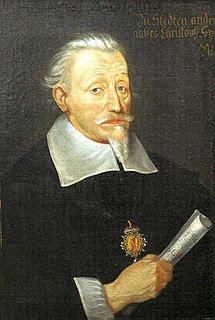
Rhetoric is the art of persuasion, which along with grammar and logic, is one of the three ancient arts of discourse. Rhetoric aims to study the techniques writers or speakers utilize to inform, persuade, or motivate particular audiences in specific situations.Taking place in Athens in the early fifth century, the demos "the people" created "a strategy for effectively talking to other people in juries, forums, and the senate". Aristotle defines rhetoric as "the faculty of observing in any given case the available means of persuasion" and since mastery of the art was necessary for victory in a case at law, for passage of proposals in the assembly, or for fame as a speaker in civic ceremonies; he calls it "a combination of the science of logic and of the ethical branch of politics". Rhetoric typically provides heuristics for understanding, discovering, and developing arguments for particular situations, such as Aristotle's three persuasive audience appeals: logos, pathos, and ethos. The five canons of rhetoric or phases of developing a persuasive speech were first codified in classical Rome: invention, arrangement, style, memory, and delivery.
Genre is any form or type of communication in any mode with socially-agreed-upon conventions developed over time. In popular usage, it normally describes a category of literature, music, or other forms of art or entertainment, whether written or spoken, audio or visual, based on some set of stylistic criteria, yet genres can be aesthetic, rhetorical, communicative, or functional. Genres form by conventions that change over time as cultures invent new genres and discontinue the use of old ones. Often, works fit into multiple genres by way of borrowing and recombining these conventions. Stand-alone texts, works, or pieces of communication may have individual styles, but genres are amalgams of these texts based on agreed-upon or socially inferred conventions. Some genres may have rigid, strictly adhered-to guidelines, while others may show great flexibility.

A figure of speech or rhetorical figure is a word or phrase that entails an intentional deviation from ordinary language use in order to produce a rhetorical effect. Figures of speech are traditionally classified into schemes, which vary the ordinary sequence or pattern of words, and tropes, where words are made to carry a meaning other than what they ordinarily signify.

Heinrich Schütz was a German composer and organist, generally regarded as the most important German composer before Johann Sebastian Bach, as well as one of the most important composers of the 17th century. He is credited with bringing the Italian style to Germany and continuing its evolution from the Renaissance into the Early Baroque. Most of his surviving music was written for the Lutheran church, primarily for the Electoral Chapel in Dresden. He wrote what is traditionally considered to be the first German opera, Dafne, performed at Torgau in 1627, the music of which has since been lost, along with nearly all of his ceremonial and theatrical scores.
Hyperbole is the use of exaggeration as a rhetorical device or figure of speech. In rhetoric, it is also sometimes known as auxesis. In poetry and oratory, it emphasizes, evokes strong feelings, and creates strong impressions. As a figure of speech, it is usually not meant to be taken literally.
In rhetoric, a rhetorical device, persuasive device, or stylistic device is a technique that an author or speaker uses to convey to the listener or reader a meaning with the goal of persuading them towards considering a topic from a perspective, using language designed to encourage or provoke an emotional display of a given perspective or action. Rhetorical devices evoke an emotional response in the audience through use of language, but that is not their primary purpose. Rather, by doing so, they seek to make a position or argument more compelling than it would otherwise be.

Johann Andreas Herbst was a German composer and music theorist of the early Baroque era. He was a contemporary of Michael Praetorius and Heinrich Schütz, and like them, assisted in importing the grand Venetian style and the other features of the early Baroque into Protestant Germany.
Johannes Nucius was a German composer and music theorist of the late Renaissance and early Baroque eras. Although isolated from most of the major centers of musical activity, he was a polished composer in the style of Lassus and penned an extremely influential treatise on the rhetorical application of compositional devices.
In rhetoric, antimetabole is the repetition of words in successive clauses, but in transposed order; for example, "I know what I like, and I like what I know". It is related to, and sometimes considered a special case of, chiasmus.
Inventio, one of the five canons of rhetoric, is the method used for the discovery of arguments in Western rhetoric and comes from the Latin word, meaning "invention" or "discovery". Inventio is the central, indispensable canon of rhetoric, and traditionally means a systematic search for arguments.
The Rhetorica ad Herennium, formerly attributed to Cicero or Cornificius, but in fact of unknown authorship, sometimes ascribed to an unnamed doctor, is the oldest surviving Latin book on rhetoric, dating from the late 80s BC, and is still used today as a textbook on the structure and uses of rhetoric and persuasion.

Johann Gottfried Walther was a German music theorist, organist, composer, and lexicographer of the Baroque era.
Owing to its origin in ancient Greece and Rome, English rhetorical theory frequently employs Greek and Latin words as terms of art. This page explains commonly used rhetorical terms in alphabetical order. The brief definitions here are intended to serve as a quick reference rather than an in-depth discussion. For more information, click the terms.
Rhetoric of science is a body of scholarly literature exploring the notion that the practice of science is a rhetorical activity. It emerged following a number of similarly-oriented disciplines during the late 20th century, including the disciplines of sociology of scientific knowledge, history of science, and philosophy of science, but it is practiced most fully by rhetoricians in departments of English, speech, and communication.
Repetition is important in music, where sounds or sequences are often repeated. It may be called restatement, such as the restatement of a theme. While it plays a role in all music, with noise and musical tones lying along a spectrum from irregular to periodic sounds,(Moravcsik, 114)(Rajagopal, ) it is especially prominent in specific styles.
In classical music theory, the English cadence is a contrapuntal pattern particular to the authentic or perfect cadence. It features a flattened seventh scale degree against the dominant chord, which in the key of C would be B♭ and G–B♮–D.

Musurgia Universalis, sive Ars Magna Consoni et Dissoni is a 1650 work by the Jesuit scholar Athanasius Kircher. It was printed in Rome by Ludovico Grignani and dedicated to Archduke Leopold Wilhelm of Austria. It was a compendium of ancient and contemporary thinking about music, its production and its effects. It explored, in particular, the relationship between the mathematical properties of music with health and rhetoric. The work complements two of Kircher's other books: Magnes sive de Arte Magnetica had set out the secret underlying coherence of the universe and Ars Magna Lucis et Umbrae had explored the ways of knowledge and enlightenment. What Musurgia Universalis contained, through its exploration of dissonance within harmony, was an explanation of the presence of evil in the world.
Musica Poetica may refer to:
In classical rhetoric, figures of speech are classified as one of the four fundamental rhetorical operations or quadripartita ratio: addition (adiectio), omission (detractio), permutation (immutatio) and transposition (transmutatio).
Joachim Burmeister was a north German composer and music theorist.